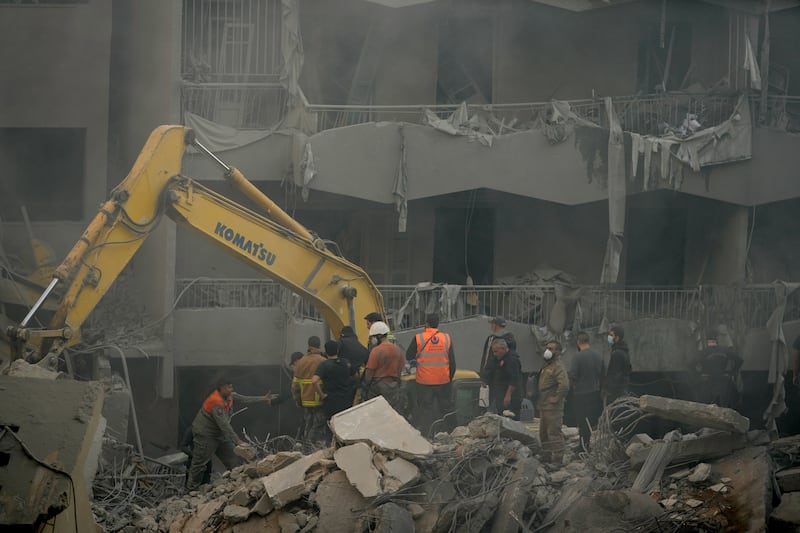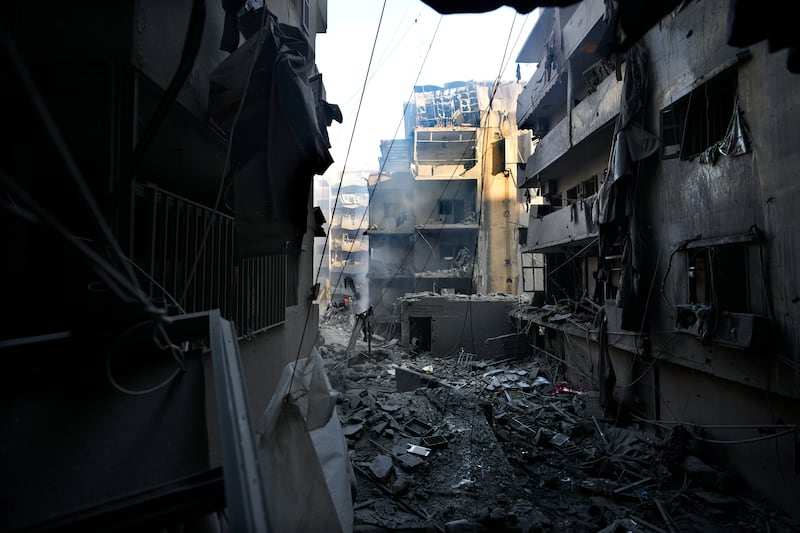Israeli air strikes in the Lebanese capital have killed at least 15 people as diplomats scrambled to broker a ceasefire. Lebanon’s health ministry said 63 people were wounded in the strikes, the fourth in central in less than a week.
The escalation comes after US envoy Amos Hochstein travelled to the region this week in an attempt to broker a ceasefire deal to end the more than 13 months of fighting between Israel and Hizbullah, which has erupted into full-on war in the past two months.
Israeli bombardment has killed more than 3,500 people in Lebanon and wounded more than 15,000, according to the Lebanese health ministry. It has displaced about 1.2 million, or a quarter of Lebanon’s population. On the Israeli side about 90 soldiers and nearly 50 civilians have been killed by rockets, drones and missiles in northern Israel and in fighting in Lebanon.

Israel’s war with Hamas also shows no signs of abating. Gaza’s health ministry said at least 80 people were killed between Thursday and Friday in multiple strikes in the enclave’s north, including the Kamal Adwan and Al-Ahli hospitals. Dozens of people are still trapped under the rubble, it said. The strikes occurred at 4am local time, destroying an eight-storey building and leaving a crater in the ground.
READ MORE
Also on Saturday a drone strike killed two people and injured three in the southern port city of Tyre, according to the state-run National News Agency. Hizbullah spokesman Amin Shiri said on Saturday that the building targeted was a residential one and no Hizbullah officials were inside.
Mohammed Bikai, spokesperson for the Fatah Palestinian faction in the Tyre area, said those killed were Palestinian refugees who were fishermen living in the nearby al-Rashidieh camp. Despite a warning last month by Israel’s army telling people not to fish along Lebanon’s southern coast, Mr Bikai said the Palestinians continued to go out to sea. “You can’t tell someone who needs to eat that you can’t fish,” he said.
Israel’s military did not issue a warning for residents before the strikes in central Beirut and did not comment on the casualties. It warned residents on Saturday in parts of Beirut’s southern suburbs that they were residing near Hizbullah facilities, which the army would target in the near future. The warning, posted on X, told people to evacuate at least 500m away.
The army said that over the past day it had conducted intelligence-based strikes on Hizbullah targets in Dahiyeh, in Beirut’s southern suburbs, where Hizbullah has a strong presence. It said it hit several command centres and weapons storage facilities.

Strikes also continued in Gaza on Saturday. At least six people were killed, half of them children, and two women, in the southern city of Khan Younis, according to Associated Press reporters and staff at Nasser hospital.
After the attack AP reporters saw people grieving over what appeared to be the lifeless body of a man, and bloodied children were seen helping each other away from the wreckage.
The death toll in the fighting in the Gaza Strip between Israel and Hamas has surpassed 44,000 this week, according to local health officials. The Gaza health ministry does not distinguish between civilians and combatants in its count, but it has said that more than half of the deaths are women and children. The Israeli military says it has killed more than 17,000 militants without providing evidence.
The war began when Hamas-led militants stormed into southern Israel on October 7th, 2023, killing some 1,200 people, mostly civilians, and abducting another 250. Around 100 hostages are still inside Gaza, at least a third of whom are believed to be dead. Most of the rest were released during a ceasefire last year.
The Israeli offensive in Gaza has caused heavy destruction across wide areas of the coastal territory, leading many to wonder when or how it will ever be rebuilt. Around 90 per cent of the population of 2.3 million people have been displaced, often multiple times, and hundreds of thousands are living in squalid tent camps with little food, water or basic services.














